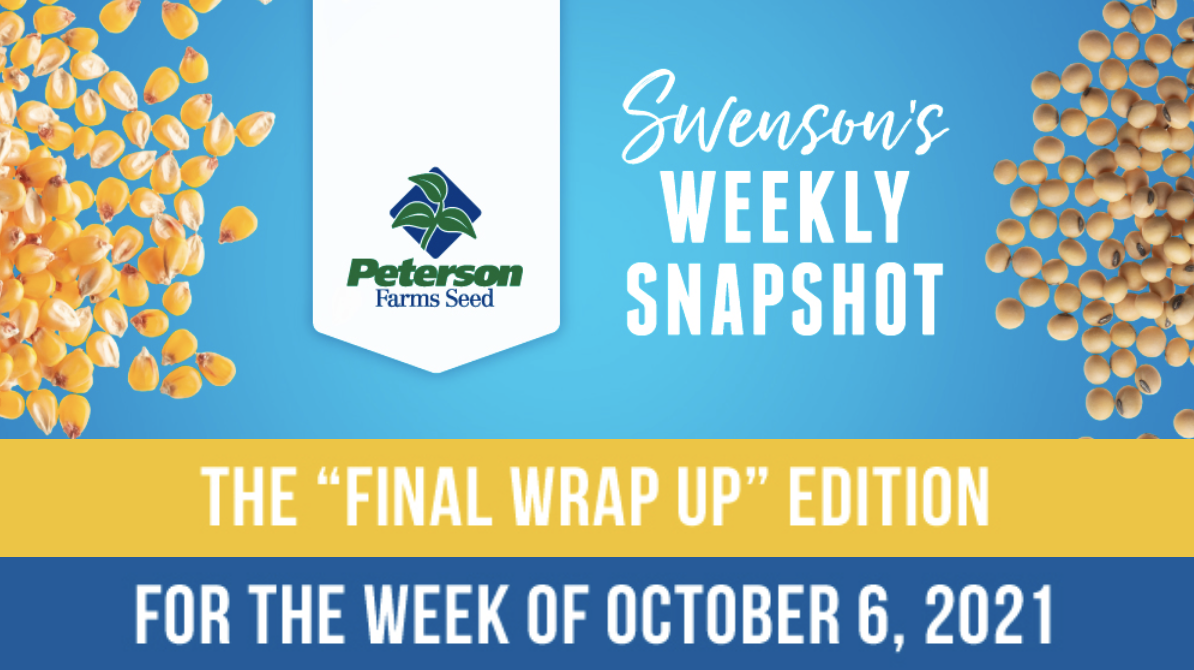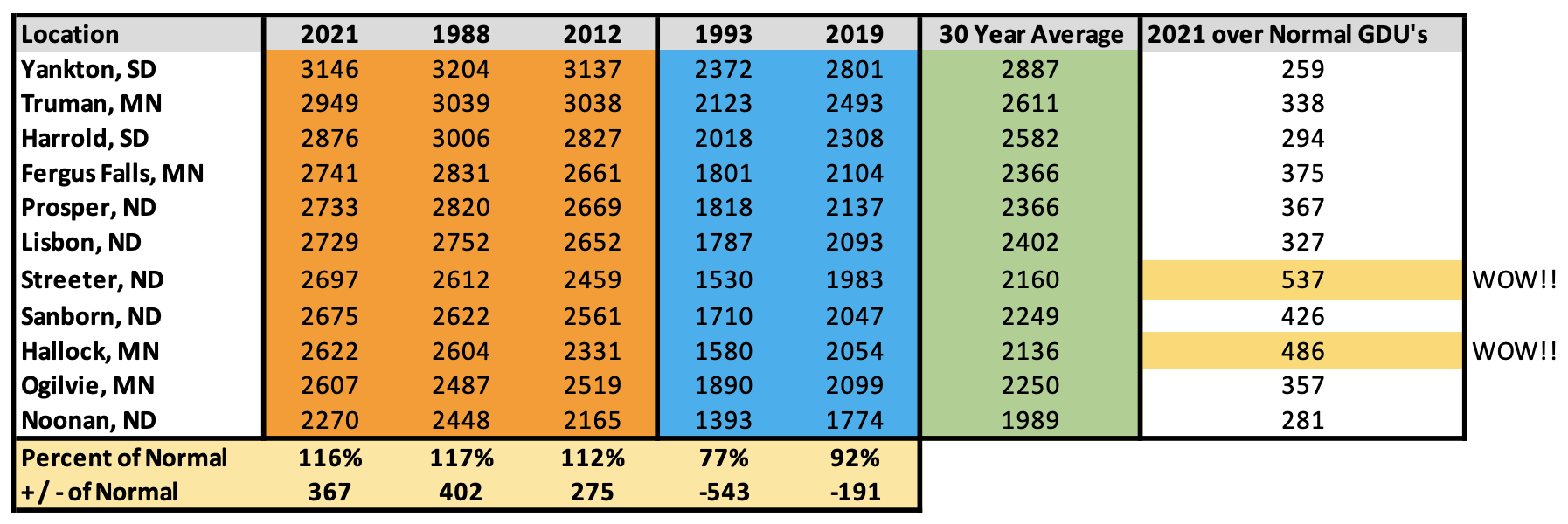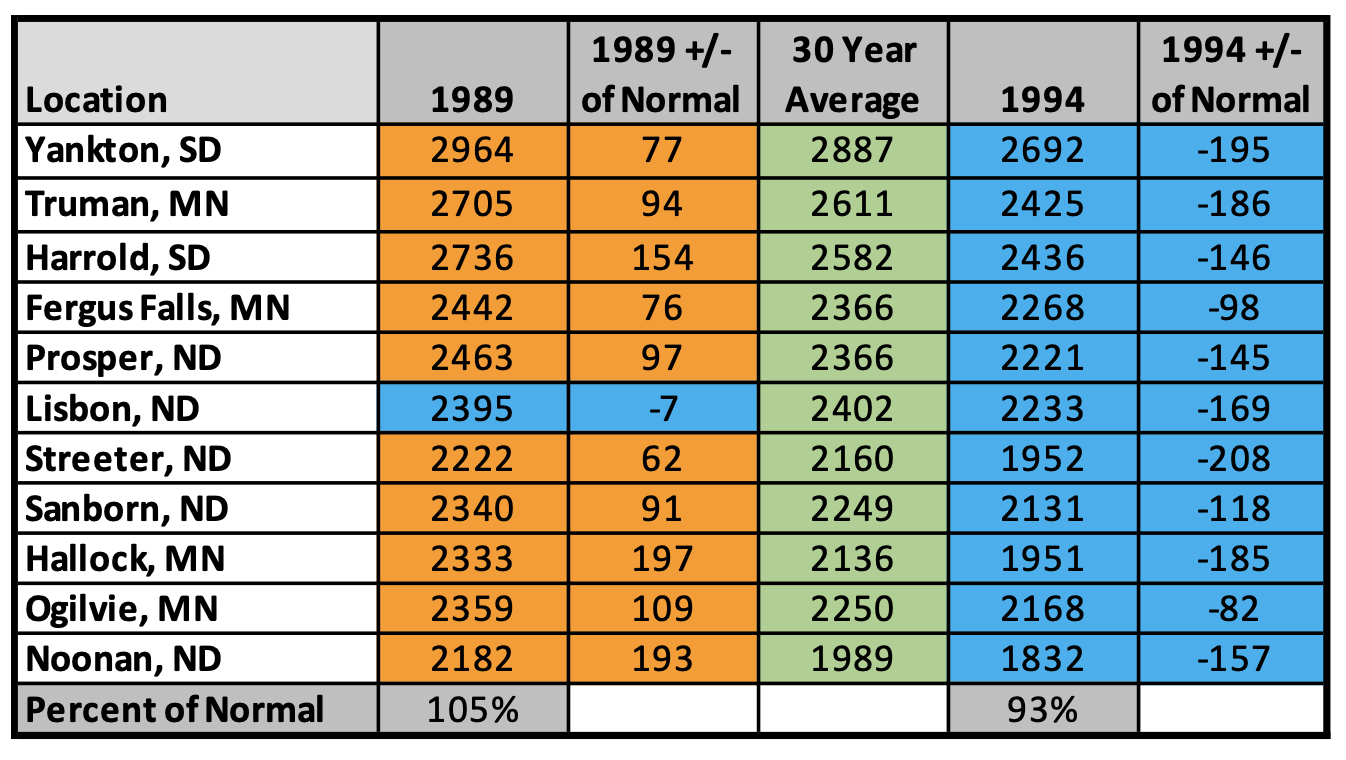Swenson’s Weekly Snapshot – 2021 in Review!

With any luck and a couple more weeks of good weather, everything will be harvested in the tri-states. Who would have thought we could have successfully grown 105-day hybrids in Hallock, MN, and 113-day in Wahpeton, ND?
But remember, nothing about 2021 has anything to do with average. 2021 will go down in the books as an outlier year!
The year started with a “Dirt Blizzard” on May 24-27. It was followed by frost on May 28, causing ten times the normal replants. Then summer decided to start on June 3 with a week of near-100 degree temps.
Places like Bismarck, ND saw 49 days over 90 degrees – with 15 of those days over 100. With that high heat baking the crops day after day combined with lack of rain, most of the region has seen severe growing season challenges.
For the last 15 years, I have finalized my annual heat unit project after the first frost – or roughly the 5th of October, whichever comes first. This year, with such extremes this week, it is a great time to reflect on both the coldest and the warmest years.
We’ll look at the coldest year, 2019, and compare it to 1993. On the flip side, we’ll look at 2012 compared to 1988. For the cold years, I used planting dates of May 15 through October 8. For the warm years, I used April 27 through October 8. I realize this is not perfect! Individual frost events and different planting dates all have a huge impact.

This chart shows the five years compared to the 30-year average. At the bottom of the chart, I averaged the 11 locations against the percent of normal and + or – GDU’s of normal.
My takeaways?
- 2021 will end up being very close to 1988, with some locations slightly warmer but most a little bit cooler.
- 2012 gets an honorable mention as one of the hottest years of all time. This should be about as warm as we ever get – especially comparing similar dry conditions and records from 1936.
- On the flipside, 2019 was much warmer than 1993, which scares me more than anything.
What can we learn from this? How does this help us raise yields in 2022 and beyond?
Things will get back to normal. This chart shows what happened in 1989 and 1994. In ‘89, most locations finished about five days ahead of normal, with Lisbon even below normal. The same was true in 1994. While it was still cooler than normal, it was only about seven days behind normal instead of 18 days ahead, like this year.

The bottom line, in my estimation? Stay the course. Don’t try to out-think Mother Nature!
We hope you enjoyed these GDU Reports this summer. Let me know if you have any suggestions for next season. I’m always looking for new ideas.
– Rick (218) 770-8975












